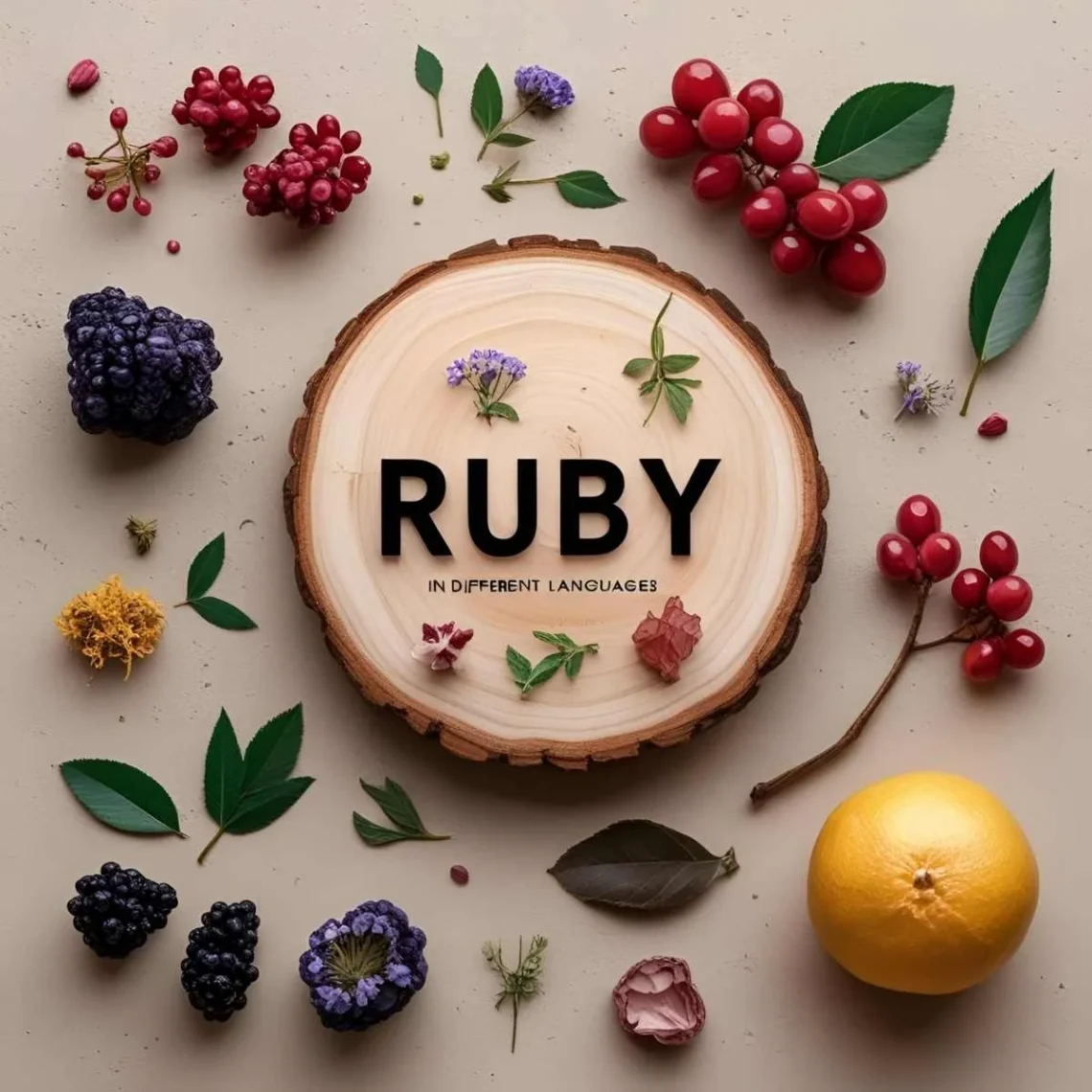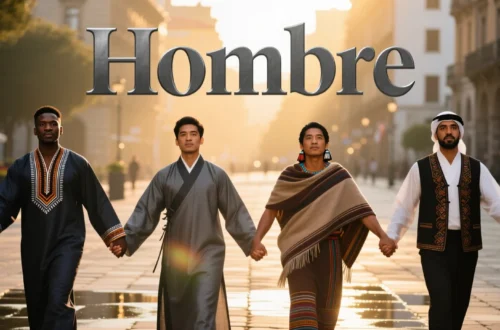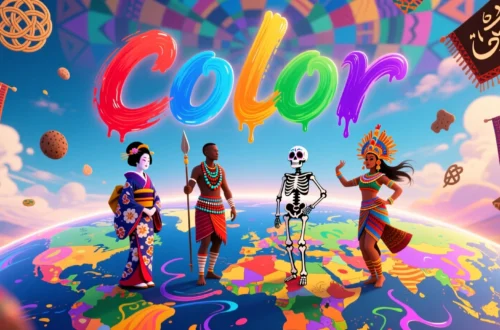As a child, I marveled at my grandmother’s ruby ring, its deep red glow sparking stories of love and legacy. The word “ruby,” tied to this vibrant gem, resonates across cultures, symbolizing passion, protection, and beauty.
Whether whispered in a Parisian jewelry shop or celebrated in a Mumbai market, the term for “ruby” carries a universal allure, shaped by each culture’s traditions.
Let’s embark on a global journey to explore how people name this precious stone in different languages and what it reveals about their values.
Reference Table: “Ruby” in Different Languages
| Language | Word/Phrase | Cultural/Linguistic Insight |
|---|---|---|
| French | Rubis | Evokes luxury and romance, often tied to love. |
| Spanish | Rubí | Associated with passion and nobility in Spain. |
| Italian | Rubino | Reflects Italy’s appreciation for vibrant gemstones. |
| German | Rubin | A straightforward term, linked to wealth and status. |
| Mandarin | Hóngbǎoshí (红宝石) | Means “red gem,” emphasizing the stone’s vivid color. |
| Hindi | Manik | Tied to astrology, believed to bring courage and luck. |
| Japanese | Rubī (ルビー) | Borrowed from English, used in modern jewelry culture. |
| Korean | Rubi (루비) | Reflects South Korea’s growing love for Western gem names. |
| Arabic | Yāqūt (ياقوت) | A poetic term, linked to beauty and rarity. |
| Swahili | Yakuti | Borrowed from Arabic, symbolizing wealth in East Africa. |
| Zulu | Irubi | Reflects the gem’s rarity and value in South Africa. |
| Yoruba | Rubi | Adopted from English, used in modern Nigerian contexts. |
| Maori | Rupī | A phonetic adaptation, tied to natural beauty. |
| Hawaiian | Kuka | Means “red stone,” evoking volcanic landscapes. |
| Cherokee | Galvquodiyi | A term for red gemstones, linked to spiritual power. |
European Languages: A Gem of Romance and Status
European languages name “ruby” with terms that evoke luxury and emotion. For instance, in French, “rubis” is tied to romance, often featured in love-inspired jewelry in Paris. Meanwhile, Spanish uses “rubí,” a word linked to passion and nobility, seen in Spain’s royal heirlooms. Additionally, Italian speakers say “rubino,” reflecting Italy’s love for vibrant gems in art and fashion. In German, “Rubin” is straightforward, associated with wealth and status, often used in formal settings. Thus, these terms highlight Europe’s blend of romantic and regal associations with rubies, from poetic French to pragmatic German.
Asian Languages: Symbolism in Color and Culture
Asia’s diverse languages reflect deep cultural meanings for “ruby.” For example, in Mandarin, “hóngbǎoshí” (red gem) emphasizes the stone’s vivid hue, tied to luck and prosperity in China. In Hindi, “manik” is revered in astrology, believed to boost courage and worn in India’s vibrant markets. Similarly, Japanese uses “rubī,” borrowed from English, reflecting modern jewelry trends in Tokyo. In Korean, “rubi” aligns with South Korea’s embrace of Western gem names, popular in trendy boutiques. Finally, Arabic’s “yāqūt,” used across over 20 countries like Saudi Arabia and Egypt, carries a poetic flair, tied to beauty and rarity in Middle Eastern lore. These terms showcase Asia’s range, from spiritual symbolism to modern influences.
African Languages: Wealth and Heritage
In African languages, “ruby” often symbolizes wealth and tradition. For instance, Swahili, spoken in over 20 countries like Kenya and Tanzania, uses “yakuti,” borrowed from Arabic, to denote luxury in trade-heavy regions. In Zulu, “irubi” reflects the gem’s rarity in South Africa, often celebrated in cultural ceremonies. Similarly, Yoruba’s “rubi,” adopted from English in Nigeria, is used in modern contexts, symbolizing status. These terms, spoken in bustling markets or traditional gatherings, emphasize rubies as treasures of heritage and prosperity across Africa.
Indigenous & Island Languages: Gems of Nature and Spirit
Indigenous and island languages name “ruby” with ties to nature and spirituality. For example, Maori in New Zealand uses “rupī,” a phonetic adaptation that evokes natural beauty. In Hawaiian, “kuka” (red stone) connects to volcanic landscapes, symbolizing the island’s fiery spirit. Similarly, Cherokee’s “galvquodiyi” refers to red gemstones, tied to spiritual power in Native American traditions. In Samoan, terms like “kenika” (red jewel) reflect the Pacific’s communal appreciation for natural treasures. Across these cultures, from New Zealand to the Cherokee Nation, “ruby” signifies beauty and sacred connection, often honored in rituals.
Cultural Insights: The Evolution of a Gem’s Name
The word “ruby” has deep historical roots. Derived from Latin “ruber” (red), it spread through medieval Europe, shaping terms like “rubis” and “rubino.” In Arabic, “yāqūt” appears in ancient texts, symbolizing divine beauty. In Asia, “manik” ties to Vedic astrology, believed to harness cosmic energy. African terms like “yakuti” reflect trade routes with the Middle East, blending local and foreign influences. These names carry centuries of meaning, from European royal jewels to Pacific spiritual symbols, showing the ruby’s timeless allure across civilizations.
Proverbs and Sayings: Wisdom of the Ruby
- French: “Un rubis brille plus fort que l’amour.” (A ruby shines brighter than love.) – Highlights the gem’s enduring value.
- Hindi: “Manik dil ko shakti deta hai.” (A ruby gives strength to the heart.) – Ties the gem to courage.
- Swahili: “Yakuti ni hazina ya moyo.” (A ruby is the heart’s treasure.) – Emphasizes emotional value.
- Japanese: “Rubī wa kokoro no hi o tomosu.” (A ruby lights the heart’s fire.) – Evokes passion.
- Yoruba: “Rubi mu ayọ wa.” (A ruby brings joy.) – Links the gem to happiness.
FAQs
Why do some words for “ruby” sound similar?
Latin’s “ruber” influenced European terms like “rubis,” while trade and globalization spread “ruby” to languages like Japanese and Yoruba.
What’s the oldest term for “ruby”?
Latin “ruber” (circa 1st century BCE) is among the earliest, evolving into modern European terms.
How do cultures shape the term’s use?
In spiritual cultures (e.g., Indian, Indigenous), “ruby” ties to cosmic or sacred power, while material cultures (e.g., European) emphasize luxury.
Conclusion
From “rubis” in France to “yakuti” in Tanzania, the word for “ruby” weaves a global thread of beauty and meaning. Each term, whether the poetic “yāqūt” in Arabic or the natural “kuka” in Hawaiian, reflects cultural values while celebrating the gem’s universal allure. Consequently, these words remind us that a single stone can unite humanity in admiration. How do you say “ruby” in your language, and what does it mean to you? Share your stories below—we’d love to hear your thoughts!






